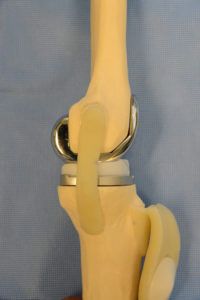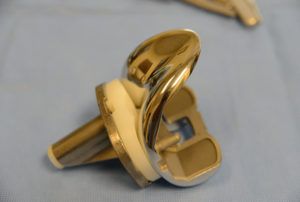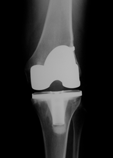


Did You Know?
A total knee replacement replaces a worn knee joint, which can be equated to replacing worn tires with new tires. This is the most effective way to treat severe knee arthritis.
Frequently Asked Questions:
Am I a candidate for a total knee replacement?
How are total knee replacements performed?
- Your surgeon will make an incision in the knee.
- The damaged cartilage and a small amount of bone will be removed from the end of the femur and the top of the tibia, using specialized guidance devices to ensure perfect alignment.
- A metal implant will be inserted into the top of the tibia and onto the end of the femur, using either bone cement or a special porous metal coating to hold them in place. A plastic bearing will be inserted into the tibia piece to act as the artificial cartilage.
- The patella is often also resurfaced.
What can I expect during recovery?
After your operation, you can expect to spend about an hour in the recovery room area, until the spinal anesthetic wears off. Within a few hours, one of our physical therapists will have you up and moving as they show you post-operative exercises and techniques for everyday tasks. You will be ready to go home 4-5 hours after surgery.
During your recovery process, a walker or cane will be needed initially. You may also desire a cooling unit to help with postoperative discomfort. You can expect to have a physical therapist come to your house to assist you with an exercise program to promote proper healing. Follow up visits are also usually scheduled at the 2-week, 6-week, and 3-month marks.
In most cases, you should be able to walk independently within 2 weeks after surgery. At the 6-week mark, you will be able to resume most of your regular activities.
Schedule a consultation with Dearborn & Associates in Menlo Park & Fremont, CA today to see if total knee replacement is the right treatment for you!





Total Knee Replacement
This pamphlet describes knee replacement surgery in detail, including the potential risks and complications. It is required reading for my knee patients prior to surgery and has a section on minimally invasive knee replacement.




